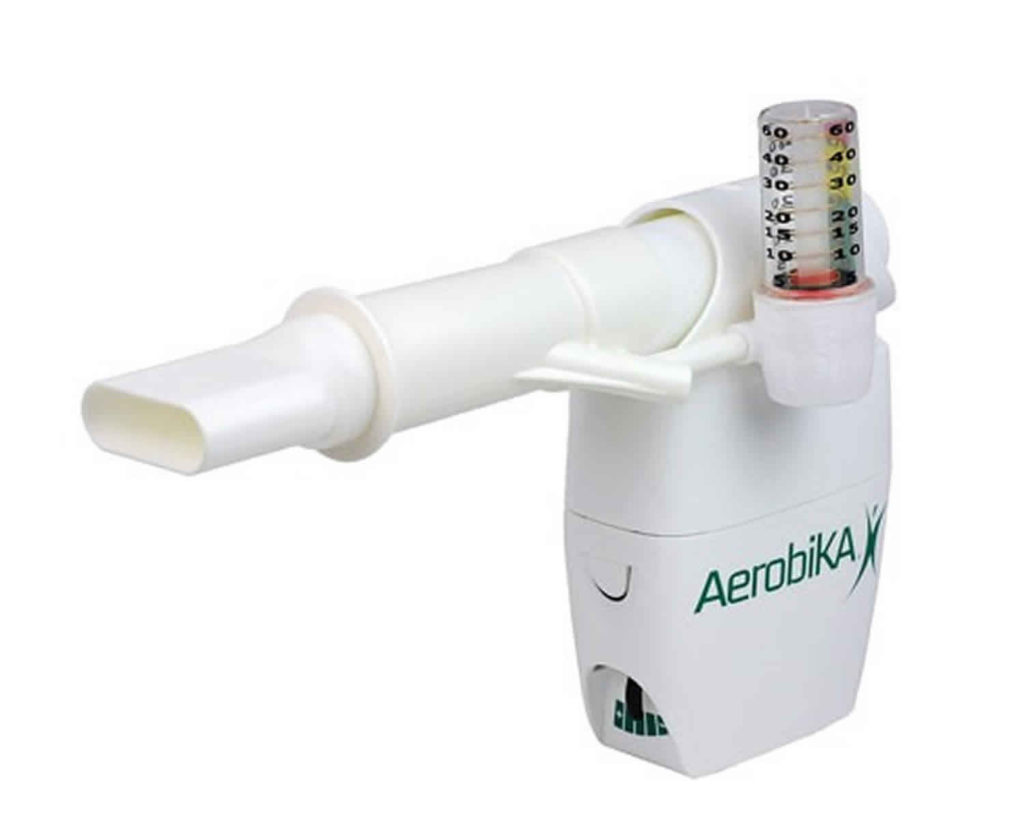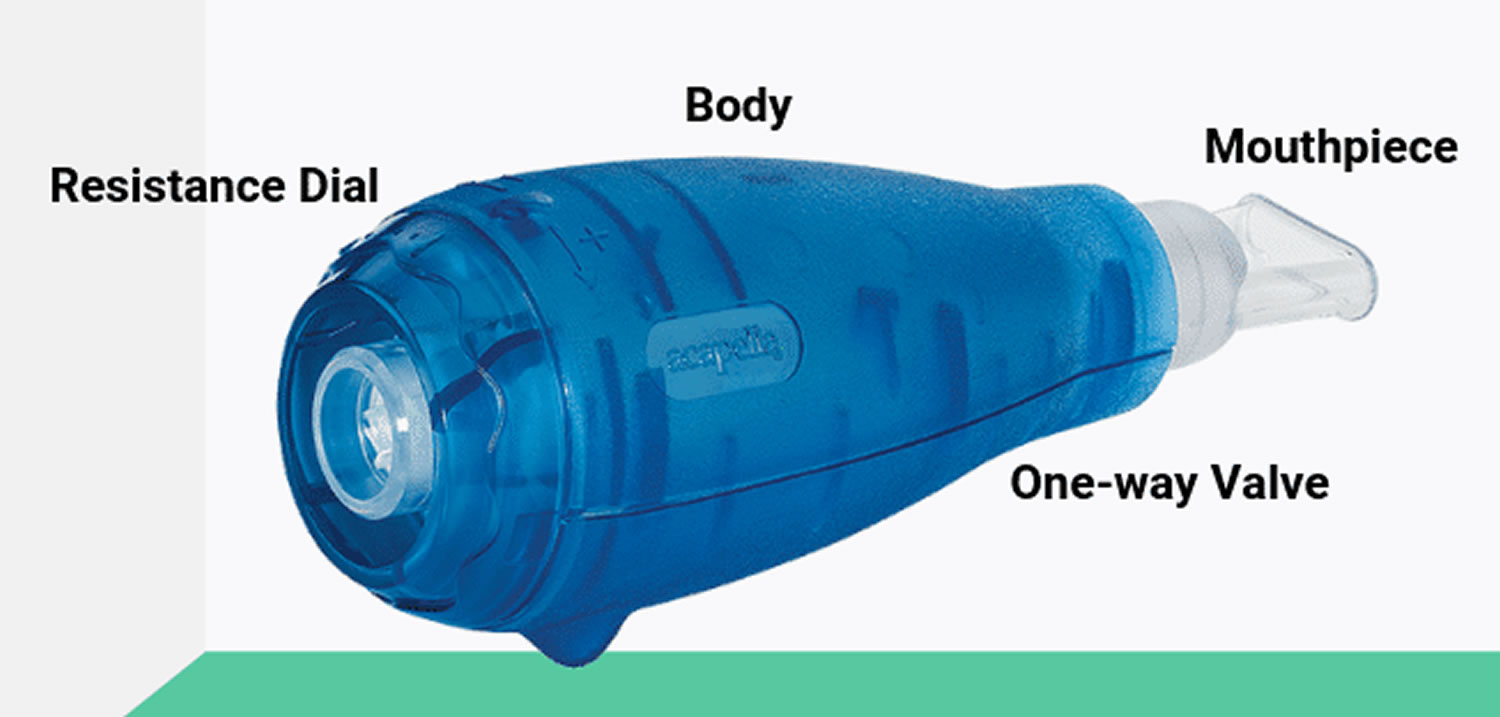

The Flutter ($68) is a pipe-like device with a hardened plastic mouthpiece at one end, a protective perforated cover at the other end, and a high-density stainless steel ball resting in a plastic circular cone on the inside ( Fig. 9 The frequencies for the Lung Flute are also similar to those for the Flutter however, these 2 devices have never been compared. 4, 7 In addition, studies using the Flutter found that oscillatory waves with varying frequencies are transmitted through the airways, resulting in shearing forces that reduce viscoelasticity of bronchial secretions 8 and easier transportation. The pressure generated by PEP during expiration stabilizes airways, assists mucus movement, and prevents airway closure, thereby improving ventilation. 6 The Flutter (Aptalis Pharma, Bridgewater, New Jersey) and the Lung Flute (Medical Acoustics, Buffalo, New York) are 2 commercially available intrathoracic oscillatory positive expiratory pressure (PEP) devices designed to augment sputum expectoration.

Several airway clearance devices are commercially available to aid in sputum expectoration and optimizing outcomes, but to date, no single device has demonstrated clear superiority. 4, 5 Any effective secretion clearance regime needs to be able to be performed independently, be integrated into normal daily activities, and be cost-effective.
#FLUTTER VALVE MUCUS REMOVAL DEVICE MANUAL#
3 Active-cycle-of-breathing technique, gravity-assisted drainage, and manual techniques are often difficult for elderly patients and those with severe disease due to comorbidities and reduced respiratory muscle and cough strength. 2 These techniques are used in combination with forced expiration technique to move the mobilized secretions to proximal airways to be cleared, which then may require subsequent cough. 2 Respiratory therapists and physiotherapists use a spectrum of airway clearance maneuvers such as active-cycle-of-breathing technique with or without gravity-assisted drainage and manual techniques as well as positive pressure devices with or without oscillations. 1Īirway clearance techniques are integral to the management of bronchiectasis, clearing conducting airways, improving pulmonary ventilation, and reducing cough and breathlessness. Impaired clearance of this mucus predisposes to mucus retention and recurrent respiratory infections. The mucus becomes colonized by bacteria and then hyperviscous and purulent. 1 In the affected areas, there is excess production of mucus due to glandular hyperplasia. Bronchiectasis is associated with damaged ciliated epithelium and compromised mucociliary clearance. Acapella's performance is not gravity-dependent (ie, dependent on device orientation) and may be easier to use for some patients, particularly at low expiratory flows.Bronchiectasis is a lung disease characterized by repeated cycles of airway infection and inflammation that ultimately result in airway and lung parenchyma destruction. At 5 L/min the Acapella produced a more stable waveform, with a lower frequency, higher amplitude, and a slightly wider range of PEP than the Flutter.Īcapella and Flutter have similar performance characteristics. Both devices produced similar pressure waveforms at the medium flows. However, the differences were relatively small and may not be clinically important. There were statistically significant differences between the devices for mean pressure, pressure amplitude, and frequency, for all experimental conditions. Data were analyzed by 2-way repeated measures analysis of variance, and differences were considered significant when p was < 0.05. The devices were adjusted to give low, medium, and high mean expiratory pressure (Flutter angle at 0, 20, and 40 degrees Acapella by dial setting). The pressure waveform for 1 second was also graphically displayed and recorded.

Values for frequency, peak, trough, and mean pressure were recorded automatically every 3 seconds at flows of 5, 10, 15, 20, 25, and 30 L/min. We measured oscillatory amplitude, PEP, and frequency.

We hypothesized that the Acapella and Flutter would produce similar mean PEP, oscillatory pressure amplitude, and frequency over a clinically relevant range of flows. The Acapella comes in 2 models: one for patients with expiratory flow > or = 15 L/min and one for < or = 15 L/min. A new device, the Acapella, uses a counterweighted plug and magnet to create air flow oscillation. In the Flutter a steel ball vibrates inside a cone, causing air flow vibration. Oscillatory positive expiratory pressure (PEP) with the Flutter device facilitates secretion removal.


 0 kommentar(er)
0 kommentar(er)
